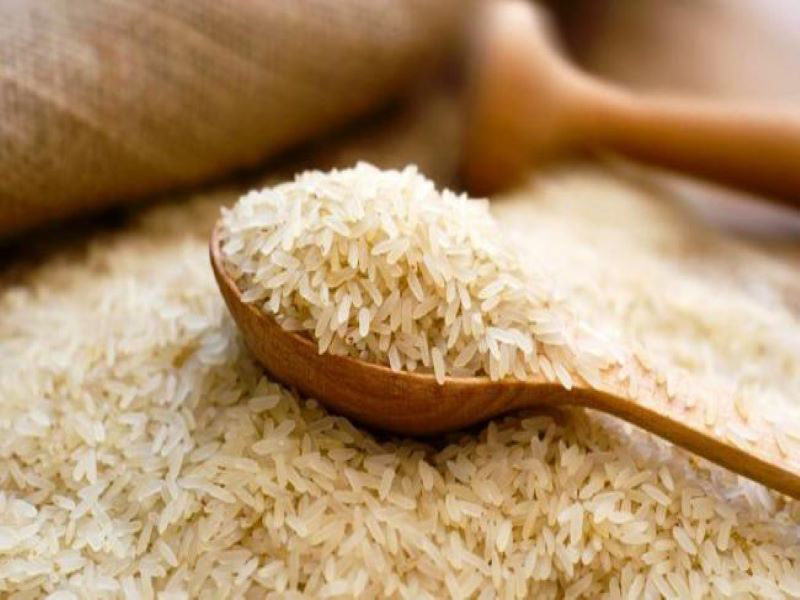 Rice
Rice India's non-basmati rice exports jump by 109 pc to $ 6115 million
New Delhi: India’s non-basmati rice exports jumped 109 percent from $ 2925 million in FY 2013-14 to $ 6115 million in FY 2021-22.
As per DGCIS data, India exported rice to over 150 countries across the globe in 2021-22. India exported more than USD one million to 76 countries out of the 150 countries reported in 2021-22, It indicates the diversification of India's rice export over the years.
Highlighting the historic achievement in a tweet, Union Minister for Commerce and Industry, Consumer Affairs, Food, and Public Distribution and Textiles, Piyush Goyal has said that the Modi government’s policies helped farmers to get access to the global markets and also ensure food security.
According to the DGCIS data, India had exported non-basmati rice worth USD 2015 million in 2019-20, which rose to USD 4799 million in 2020-21 and USD 6115 million in 2021-22.
Registering a growth of 27% in 2021-22, the export of non-basmati rice was the top forex earner among all agri-commodities, at USD 6115 million.
“In collaboration with our foreign missions, we have coordinated development of logistics as well as focus on production of quality produce, which has boosted India’s rice exports prospects,” Dr M. Angamuthu, Chairman, Agricultural and Processed Food Products Export Development Authority (APEDA), said.
West African country Benin is one of the major importers of non-basmati rice from India.
Other destination countries are Nepal, Bangladesh, China, Cote D’ Ivoire, Togo, Senegal, Guinea, Vietnam, Djibouti, Madagascar, Cameroon Somalia, Malaysia, Liberia U.A.E. etc.
In 2020-21, India shipped non-basmati rice to nine countries - Timor-Leste, Puerto Rico, Brazil, Papua New Guinea, Zimbabwe, Burundi, Eswatini, Myanmar and Nicaragua, where exports were carried out for the first time or earlier the shipment was smaller in volume.
India’s thrust on expanding port handling infrastructure, developing of value chain involving key stakeholders along with efforts to explore new opportunities in countries or markets for rice exports in the last couple of years have led to a huge spike in rice exports.
Notwithstanding logistical challenges posed by the COVID19 pandemic, India continues to expand its rice exports footprint in the African, Asian and European Union markets, thus having the largest share in the global rice trade. The robust global demand also helped India’s growth in rice exports.
The major rice-producing states are West Bengal, Uttar Pradesh, Punjab, Tamil Nadu, Andhra Pradesh, Bihar, Chhattisgarh, Odisha, Assam, and Haryana.
As per Second Advance Estimates for 2021-22, the total production of Rice during 2021-22 is estimated at a record 127.93 million tonnes, which is higher by 11.49 million tonnes than the last five years’ average production of 116.44 million tonnes.
However, as per the second Advance Estimates for 2021-22, total foodgrains production in the country is estimated at a record 316.06 million tonnes which is higher by 5.32 million tonnes than the production of food grains during 2020-21.
Further, the production during 2021-22 is higher by 25.35 million tonnes than the previous five years’ (2016-17 to 2020-21) average production of food grains.
Notably, India is the world’s second-largest rice producer after China. The record exports would enable the rice producers to reduce their stocks and would also benefit the farmers as the increased demand for Indian Rice is likely to improve their realizations. The significant rise in agri-exports is also seen as a testimony of the government’s commitment to increasing farmers’ income by boosting exports of agricultural and processed food products of the country.
Support Our Journalism
We cannot do without you.. your contribution supports unbiased journalism
IBNS is not driven by any ism- not wokeism, not racism, not skewed secularism, not hyper right-wing or left liberal ideals, nor by any hardline religious beliefs or hyper nationalism. We want to serve you good old objective news, as they are. We do not judge or preach. We let people decide for themselves. We only try to present factual and well-sourced news.







